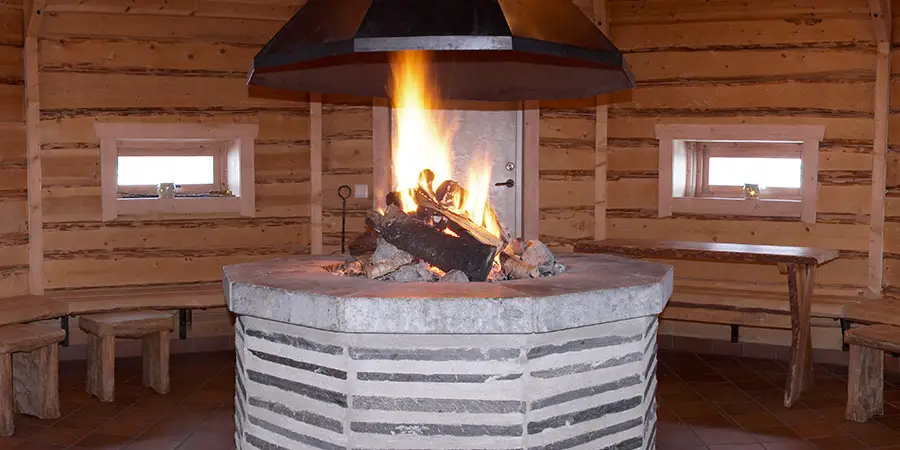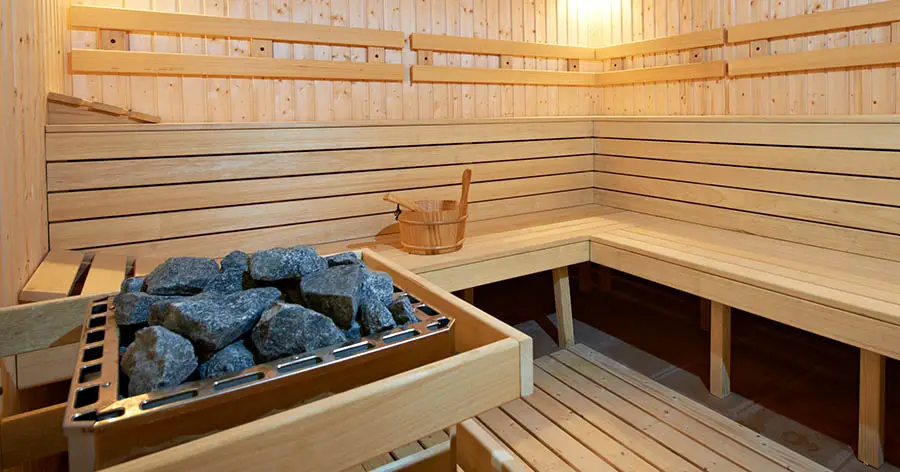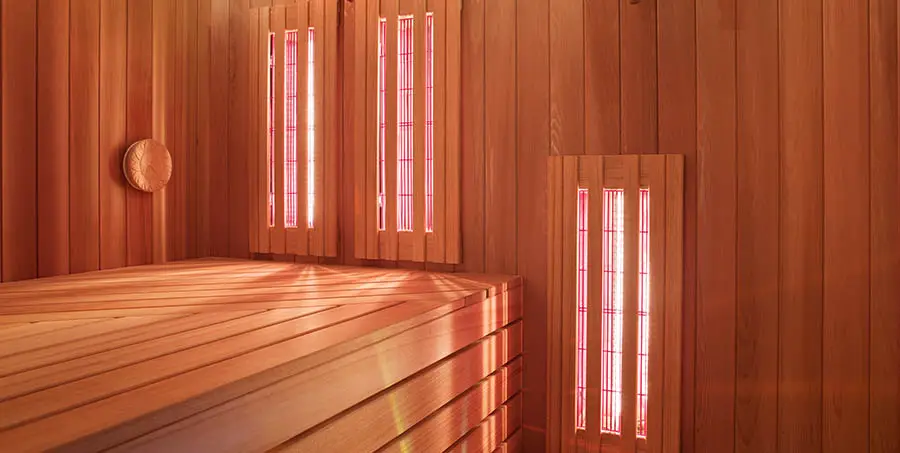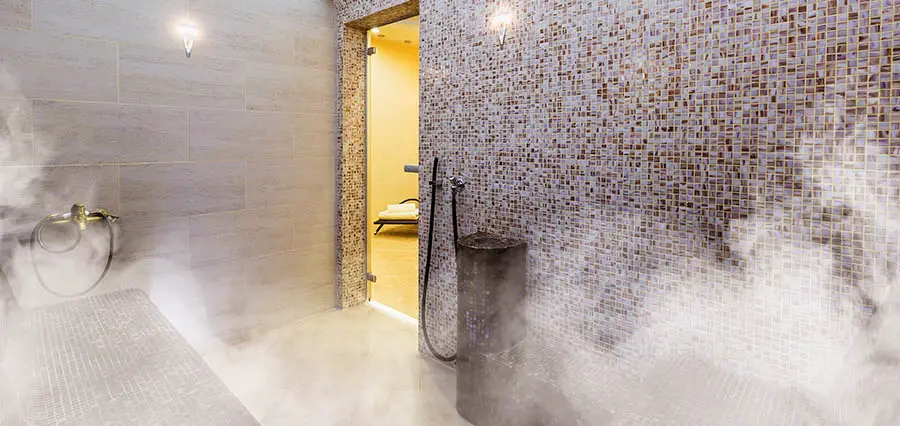The benefits of saunas are vast, providing both mental and physical benefits to regular and new users alike. If you are thinking about getting a sauna (or just getting into saunas), you might find that it’s a more challenging selection process than you thought due to all the options out there. Or perhaps you’re just curious about the different sauna types.
There are four basic types of saunas. The most common is the traditional Finnish sauna. In health clubs, electronically heated saunas and steam rooms are used more often. For home installations, infrared saunas are more frequently used.
With the many types of saunas around, it could be hard to identify which one is at your health club. Additionally, you may be wondering what the benefits of each type are and how they all compare against one another. Read on to learn everything you need to know about the four main types of saunas and their benefits.
What are the Different Types of Heat Sources for Saunas
One of the critical facets of saunas is their heat source, which is the main driving force that makes them different. Of course, there are other notable differences, too; however, the heat source is really the main differentiator. Here is a descriptive breakdown of the heat sources that control the different types of saunas.
Wood Burning Saunas & Smoke Saunas

Wood-burning saunas use wood and fire to heat the room. This is how ancient Finnish saunas worked and still remain a commercially available way to heat saunas today; sweat lodges follow the same concept as wood-burning saunas. The wood-burning stoves of this current age have had many technological advances and a very efficient and safe way to burn wood for heat.
A sauna with a wood-burning stove can achieve high temperatures as well as offer fine-control of the desired temperature level by controlling the burn rate of the wood. Smoke saunas are a variant of wood-burning saunas, called “savu saunas” in Finnish. They are not very common, and because of the possibility of health and safety issues from inhaling smoke, they are not available in the U.S.
Smoke saunas have a wood-burning stove and many rocks in the room. The smoke from the wood-burning stove is released directly into the room and allowed to burn for at least a few hours. The smoke moves between all the nooks and crannies between the rocks, which obviously heats them in the process.
After everything has been heated up, the flame is extinguished, and then all the smoke leaves the room via the ventilation system. Anyone who has ever used a smoke sauna knows that guests can use it for a calming and relaxing experience. Even though they’re very cool and unique, smoke saunas are one of the most time-consuming types and, when coupled with their safety concerns, become a less viable option. This is the primary reason why they’re not commonly used today.
Electric Heat Saunas

Electronically heated saunas first appeared on the market around 70 years ago. Since then, they have made leaps and bounds in terms of technological improvements and they’re now one of the most popular sauna types. From wall to floor-mounted electric heaters, they are now mainstream and ubiquitous since it’s so much easier to heat a sauna this way than by stoking a literal flame.
For instance, most sauna manufacturers make and design their own electric heaters for all room sizes. However, they have to pass strict safety and regulatory standards before they can be sold to the public. For many people, this makes electrically heated saunas less worrisome or problematic than ones that operate by flame (even though flame-operated saunas can be safe as well).
Another cool thing about them is that most electric sauna heaters have remote control capabilities and temperature displays, allowing you to adjust the temperature without moving from your spot. This technology is only becoming more sophisticated with time. If you-re just using a public sauna, this isn’t going to be that big of a deal to you, but if you’re having a sauna custom-built or adding one to your home, you may want features like timed operation and really fine temperature control.
Infrared Saunas

If you’ve read our other guide on the differences between infrared and traditional saunas, you know that the infrared sauna is the “new kid on the block” in the sauna world. What’s different about them is that they use “infrared” or “far-infrared” to heat a person’s body. The infrared and far-infrared wavelengths are part of the electromagnetic spectrum, which sounds overly technical, but it just means it’s part of the sun’s light radiation, like UV or visible light.
Infrared and far-infrared wavelengths have specific properties that allow them to penetrate your skin and warm your body, with far-infrared having the ability to penetrate deeper tissues. Don’t worry; this radiant heat is not harmful to you in any way. It’s the same method by which you are warmed by standing in direct sunlight.
Infrared saunas don’t use any steam and also don’t heat the air around you. They are capable of warming your body efficiently and are a great way to soothe sore muscles or relax tension before workouts and sporting events. You get all of the key health benefits from sauna use with an infrared sauna, but without having to manage the water and steam aspect. This is preferred for some.
Steam Rooms

Steam rooms work by heating up a water source which then turns into steam. Obviously, this steam provides a lot of heat. They are more commonly called “steam rooms” and frequently misnomered as a “sauna.” Even though the term sauna could be argued as categorically correct, the word “sauna” is usually reserved for the traditional Finnish style sauna with heated rocks and wooden interiors.
Saunas and steam rooms are markedly different from each other in a number of ways, including the fact that steam rooms operate at 100% humidity. This means the entire room is completely filled with warm steam. This can make your sore throat feel better, but other than that there’s no extreme difference in the health effects of steam rooms as opposed to the other styles of saunas.
Interestingly, steam rooms are usually set at a lower temperature than their sauna counterparts – usually at 110-120F, however, they tend to feel much hotter because of the higher humidity. Most steam rooms include a steam generator as the heat source, with the wide-majority of sauna dealers and manufacturers offering their own versions for convenience’s sake. At-home saunas are typically not steam, since these systems require more time to get going, and more attention to keep at the right temperature and humidity setpoints.
How Public, Home, and Portable Saunas Differ
In broad terms, public, home, and portable saunas have notable differences. Not only are the heating technologies different but the size and materials are different as well. Public saunas, like ones that you would find in health clubs, are generally steam rooms or traditional saunas. However, some clubs now offer infrared saunas, especially if they are sports-focused. For the sake of avoiding confusion and for figuring out how to properly differentiate between them, here is how to quickly identify steam rooms, traditional saunas, and then infrared saunas at your health club:
- Steam rooms — Based on their name, you could have probably guessed that steam rooms have tons of steam inside them. When a steam room is on, the steam will be so dense it would be challenging to see clearly across the room. They generally have tile interiors, another very noticeable differentiator compared to saunas which feature wood for almost all surfaces.
- Traditional saunas (electric with some steam) — Saunas in health clubs and gyms are generally of the electronically heated variety. You can quickly identify this type of sauna by looking for a wooden interior with heated rocks in the middle. Saunas will not have high humidity. If you see a lot of steam in a sauna room, that means someone got too carried away with adding water to the heated rocks. There is some steam in traditional saunas, just not thick clouds of it.
- Infrared saunas — Infrared saunas typically have a similar-looking wooden interior to traditional saunas, with one key difference. You will notice infrared heaters on the walls, ceiling, floor, and sometimes a combination of areas to heat you from all angles. Infrared saunas are the preferred method for athletes to loosen up tight muscles, reduce soreness, and as a preparation ritual before games. If you spend time in an infrared sauna, enough to heat your body up all the way, you can look forward to all the same health benefits of a traditional sauna.
As far as home and private use, there is some variability when it comes to home-installation. Full-sized saunas are a significant capital expense, with all types of saunas being offered for home-use. However, the most common type of full-sized saunas in homes are infrared because of thir comparatively lower price point and kit-based assembly. Larger at home saunas seating multiple people are more likely to be electrically heated with some steam.
Sauna blankets are a much lower-cost ($150-$550) option than a full-size sauna installation. Sauna blankets are portable, use less energy, and provide most of the same benefits as full saunas. The most popular option is the Higher Dose Sauna Blanket V3. If you’re interested in a sauna blanket, be sure to check out our guide to sauna blankets.
Different Names for Saunas
The word “sauna” is often tossed around and used for any room that produces heat with the intent of making occupants sweat. You may have heard multiple terms used for what you once considered a “sauna.” To provide a reference background, here are some familiar titles for saunas:
- Finnish Sauna — Finnish saunas boast a wooden interior with heated rocks and low humidity levels. An electronic heater or wood-burning stove can heat them. They are usually called “saunas” for short.
- Sweat lodge — Sweat lodges date back to Native American practices of constructing a dome-shaped hut encased with saplings or animal skins with a wood-heated interior. They are not at all a common type of sauna, although the term is sometimes used interchangeably with the word sauna.
- Steam room — Steam rooms are not technically “saunas.” They have tiled interiors and 100% humidity and are entirely heated by the steam.
- Turkish Hammam — Turkish Hammams are essentially steam rooms, although they sometimes include specific cultural guidelines within them.
- Russian Banya — Hailing from Mother Russia, Banya’s are similar to Finnish Sauna. However, they boost higher humidity levels, albeit lower than steam rooms.
Conclusion
There are many saunas types; the main ones are the traditional Finnish-style saunas, steam rooms, and infrared saunas. There are also variants of traditional saunas that use either wood-burning ovens or electric heaters to heat the room. Besides the way they are heated, saunas differ by the amount of humidity in them as well, with steam rooms having the highest humidity while infrared has the lowest.
